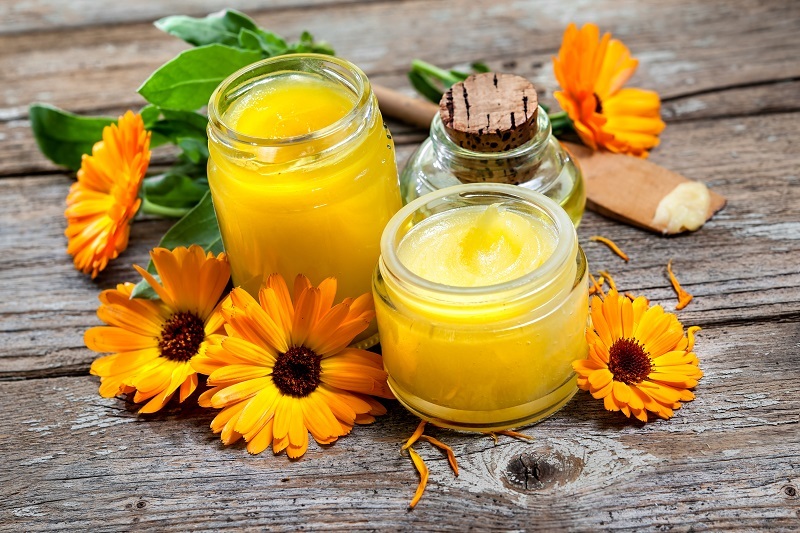Effective Techniques to Sustain Your Poinsettias
Posted on 17/08/2025
Effective Techniques to Sustain Your Poinsettias
Poinsettias (Euphorbia pulcherrima) are synonymous with festive cheer and vibrant holiday decor. Their dazzling red, pink, or white bracts instantly brighten up any space, making them a cherished choice for wintertime displays. However, while many enjoy the beauty of this plant for a few short weeks, few realize that poinsettias can thrive for much longer with the right care. Mastering effective techniques to sustain your poinsettias means you can enjoy their lush foliage and colorful bracts year-round, not just during the holidays.

Understanding the Poinsettia Plant
Before diving into poinsettia care techniques, it's essential to understand what makes these plants unique. Native to Mexico, poinsettias are tropical perennials that grow as shrubs in their natural habitat. Despite their association with cold winter climates due to their holiday popularity, they actually prefer warmer environments and precise growing conditions.
- Botanical Name: Euphorbia pulcherrima
- Family: Euphorbiaceae
- Native Habitat: Tropical forests of Mexico and Central America
- Common Colors: Red, white, cream, pink, orange, marbled
The brilliant color most people associate with poinsettias actually comes not from their flowers, but from modified leaves called bracts. The actual flowers are the small, yellowish structures in the center -- known as cyathia.
Essential Techniques for Sustaining Your Poinsettias Year-Round
Many people discard their poinsettias after the holidays, but with a little effort, you can help them thrive through every season. Below are comprehensive poinsettia care tips to keep your plant healthy and beautiful all year long.
1. Providing the Right Light Conditions
Poinsettias require bright indirect light to maintain their vitality. Insufficient light can cause the leaves and bracts to drop. Here's how you can optimize their light exposure:
- Place near a sunny window: South, east, or west-facing windows are best. Avoid direct, harsh sunlight, which can scorch the leaves.
- Rotate the pot: Rotate your poinsettia every few days to ensure even growth and prevent leaning.
- Avoid low light: If you notice fading bract color or leaf drop, move your plant to a brighter location.
2. Regulating Temperature and Humidity
Temperature is vital for sustaining healthy poinsettias. Keep the plant in an environment between 60-70?F (15-21?C) during the day and no lower than 55?F (12.8?C) at night.
- Avoid cold drafts: Do not place the plant near windows or doors that are frequently opened in winter.
- Watch heating sources: Keep away from radiators and fireplaces as heat can dry out your plant.
- Maintain humidity: Poinsettias thrive in humidity. Consider placing a tray of water and pebbles near the plant or use a humidifier if indoor air is very dry.
3. Mastering Watering Techniques
Proper watering is the backbone of poinsettia longevity. Overwatering is a common mistake that leads to root rot, while underwatering can cause wilting and leaf drop. Follow these steps:
- Check the soil: Water only when the top inch of soil feels dry to the touch.
- Thorough watering: Allow water to drain from the bottom of the pot; do not let the plant sit in standing water.
- Consistent routine: Stick to a regular watering schedule, but adjust according to seasonal changes and indoor climate.
4. Fertilization: Feeding Your Poinsettia
To support healthy growth and vivid bract coloration, poinsettias benefit from regular feeding -- but only after their blooming period.
- Post-holiday feeding: Begin fertilizing every 2-4 weeks starting in late winter or early spring, using a balanced, water-soluble fertilizer (like 20-20-20) diluted to half strength.
- Avoid during bloom: Do not fertilize while your poinsettia is still in full bloom, as this can cause leaf drop.
- Resume fertilization: Continue with regular feeding until early autumn.
5. Pruning for Health and Shape
Pruning is crucial in sustaining poinsettias for long-term health and lush growth. Pruning encourages fuller, bushier plants by stimulating branching.
- When to prune: Prune your poinsettia in late March or early April once the bracts have faded and new growth emerges.
- How to prune: Trim shoots back to about 4-6 inches in height, leaving a few leaves on each branch.
- Pinching: To promote denser growth, pinch new shoots back every 4-6 weeks through late summer.
6. Repotting and Soil Refreshment
As poinsettias grow, their root systems can become crowded, making repotting essential for continued vitality.
- Time it right: Repot your poinsettia in late spring or early summer, after heavy pruning and when new growth appears.
- Choose suitable soil: Use a well-draining potting mix, ideally rich in organic matter with added perlite or sand.
- Size up the pot: Move up one pot size, ensuring proper drainage holes.
7. Encouraging Re-bloom: The Critical Photoperiod
The secret to those stunning holiday bracts is controlling light -- poinsettias are short-day plants. To induce colorful bracts for winter, follow these steps in the fall:
- Start in late September or early October: For 8-10 weeks, give your plant 14-16 hours of complete darkness each night. Cover with a box, or place in a closet from early evening to morning.
- Provide bright daylight: Each day, expose them to bright, indirect sunlight for 6-10 hours.
- Consistent schedule: Even the briefest exposure to artificial light can delay blooming; strict adherence is vital.
- Check timing: After about 8 weeks, colored bracts should appear. Keep them in bright, indirect light to sustain vibrancy.
8. Guarding Against Common Pests and Diseases
Poinsettias are generally hardy, but they are susceptible to pests like whiteflies, aphids, fungus gnats, and diseases such as root rot and powdery mildew. Here's how to protect your plant:
- Inspect regularly: Check the undersides of leaves and stems weekly for signs of insects or fungal growth.
- Maintain cleanliness: Remove dead or fallen leaves promptly. Wipe down leaves with a damp cloth to reduce dust and potential pathogens.
- Safe pest control: Treat with insecticidal soap or neem oil at the first sign of infestation.
- Avoid overwatering: This is the primary cause of root rot. Ensure pots have sufficient drainage.
Special Considerations for Holiday Displays
Many people purchase poinsettias as centerpieces or gifts during November and December. If you want to keep those holiday plants beautiful throughout the season and well into the new year, follow these targeted techniques:
- Monitor locations: Keep away from cold windows, door drafts, heaters, fireplaces, and fruit (fruit emits ethylene gas, which can cause bract drop).
- Protect during transport: When moving your plant from outdoors or a garden center in winter, wrap the plant to shield it from cold temperatures.
- Avoid foil sleeves: Many gifts arrive with decorative foil that traps excess water. Remove or poke holes for drainage.
Poinsettia Care Timeline: A Month-by-Month Guide
For those aiming to enjoy healthy poinsettias year-round, follow this maintenance calendar:
- January-March: Continue to provide bright light and regular watering. Bracts will begin to fade.
- April: As fading accelerates, cut back stems to 4-6 inches and reduce watering until growth resumes.
- May-June: Repot as needed when new growth appears. Resume regular watering and begin monthly feeding.
- July-August: Move outdoors if outdoor temperatures are above 60?F (15?C). Keep in partial shade. Continue pinching back new shoots.
- September: Bring plant indoors before temperatures dip below 55?F (12.8?C). Begin dark treatment to induce flowering at the end of the month.
- October-November: Continue with the strict light/dark regimen.
- December: Enjoy your re-blooming poinsettia!

Frequently Asked Questions (FAQs) About Sustaining Poinsettias
How long do poinsettias typically last?
With proper care, poinsettias can last several years as houseplants, not just weeks or months.
Can I re-bloom my poinsettia for next Christmas?
Absolutely! By following the photoperiod method from September to November, you can stimulate new bract coloration every year.
Is it necessary to prune the plant every year?
Yes. Pruning is essential to prevent legginess and ensure a compact, healthy plant.
Why are the leaves on my poinsettia turning yellow and dropping?
The most common reasons are overwatering, underwatering, or drafts. Adjust your care routine accordingly.
Final Thoughts: Enjoying Your Poinsettias Beyond the Holidays
Poinsettias are not just decorative holiday disposables; they are exquisite tropical plants capable of growing and bringing beauty year-round. By applying these effective techniques to sustain your poinsettias -- from lighting and watering to pruning and the critical holiday darkness regimen -- you can transform your holiday centerpiece into a cherished, long-lasting member of your indoor garden.
Not only will you admire their brilliant colors during the festive season, but you'll also be able to marvel at their transformation and resilience every single year. With consistent, attentive care, poinsettias can reward your efforts with healthy foliage and vivid bracts -- making the magic of the holidays last much longer than December!







